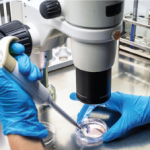Rheumatologists worried about the future of their private practices might want to consider jumping onto the super group trend that allows physicians and other providers with similar services to team up to share opportunities and minimize financial burdens.
The biggest concern for private practice physicians watching the trend but not yet embracing it is fear of losing autonomy, agreed members of a recent panel discussion in Marina Del Rey, Calif., sponsored by the California Rheumatology Alliance (CRA).

Dr. Feldman
Panel moderator and CRA President Dr. Gary Feldman defines a super group as an aggregation of previously separate practices into a single entity to obtain advantages and improvements achievable with a scale that individual practices can’t obtain; those practices may or may not have competed with each other.
The current infrastructure may not be best for navigating increasingly complex regulations and evolving payment models. A key question in choosing the super group path, says Dr. Feldman, is what the tradeoff is for less autonomy and whether it’s worth it to rheumatologists currently going it alone in smaller or solo practices.
More than half of all trainees currently entering the rheumatology field are becoming employees rather than employers as the practice environment twists and turns to accommodate new realities of nationwide health insurance reform. Increasing vulnerabilities and changes in payment models will, no doubt, present ever more challenges for the little guy overwhelmed by the administrative burdens of changing protocols and procedures, panel member Dr. Michael Schweitz told the audience.

Dr. Schweitz
“The paradigm is changing,” said Dr. Schweitz, a rheumatologist who recently initiated efforts to form a super group of physicians in South Florida. Opportunities may shrink for practices that cling to traditional modes of practicing medicine, he said.
On the other hand, the people sitting next to you are not your competitors any longer, said Dr. Todd Moldawer, another panel member who is a managing partner of a large super group operation in California’s San Fernando Valley.
“They are really your opportunity to become more successful in your practice and to help limit the impact of changes … across the entire medical landscape,” Dr. Moldawer told the audience.
In a room filled with rheumatologists, Dr. Moldawer asked how many have their own individual MRI machines or infusion centers. The lack of response emphasized his point, he said, that the more rheumatologists who contribute to an infusion center, the lower the cost will be for individual providers.
Individual Team Players
The desire to maintain a sense of independence led Dr. Schweitz and other physicians to seek only like-minded team players when they set out to form their group about a year ago.
“We wanted to start small with three or four practices, … and we wanted a like culture,” said Dr. Schweitz.
“Our idea was to start small, to get it right, to get it manageable and then grow.”
To get everything in place, the group formed a steering committee that met faithfully once a week for the past six months. The committees handled various topics, such as human relations, revenue, contracts and information technology.
“It’s been extremely effective in getting decisions made and moving forward,” said Dr. Schweitz.
His group gave extra attention to how it handled differing electronic health records and practice management systems. This is a touchy subject, and it can be a big obstacle to bringing different practices together, noted Dr. Schweitz.
The practices had already spent money and training time on new systems and had no interest in tossing them out for yet another new system that linked all the practices together. The group ultimately decided to let each practice maintain their own systems, but hired a consulting firm from Texas to help aggregate and streamline data.
“We decided that was a deal breaker at the beginning and that we would aggregate and get operational with individual EHR systems,” said Dr. Schweitz.
Obstacles & Opportunities
Be ready to jump a few hurdles, such as raising capital to pay for administrative and legal assistance to create a business structure, advised Dr. Schweitz. Hammer out compensation and expense formulas, and determine exactly how the practices will be managed as one entity—doctor to doctor—before getting lawyers involved, he said.
The work completed up front can pave the way for increased revenue streams for everyone to share and greater opportunities for more robust data aggregation, improved contracts and cost savings on supplies, drugs and management, said Dr. Schweitz. The power of the super group is the ability to achieve the scale needed to compete in the new practice landscape.
Be forewarned, “This is not an easy thing to do,” said Dr. Schweitz. Expect delays.
“It’s sort of like the addition on your house. They tell you it will be finished in 90 days or 120 days. Whatever you think, just double it.”
In an unexpected way, Dr. Schweitz’s words at the conference foreshadowed the future of the South Florida alliance. He and his colleagues had hoped the super group would be operational by July 2015, but a few weeks after the conference, the agreement fell through.
The news is “disheartening,” a disappointed Dr. Schweitz reported in a follow-up telephone conversation. Although he was hopeful that something could be done to salvage the efforts, the chance is likely remote, he said.
The failed attempt to bring the South Florida group together illustrates what may be a resistance among rheumatologists to hop on the super group bandwagon, trend or not. “Rheumatology is behind the curve,” said Dr. Feldman.
“There aren’t many super groups in the rheumatology specialty,” he said. “So there isn’t much of a track record. But many other subspecialties are following the trend.”

Dr. Moldawer
Dr. Moldawer, an orthopedic spine surgeon, described how his super group pooled together more than 40 providers over time to form a business that now has more bargaining power and is big enough to branch out to other areas that create income outside any individual physician practice.
“We have found it to be enormously helpful to have a practice that’s large enough to allow us to take advantage of ancillary income streams that would be otherwise impossible in a small practice environment,” said Dr. Moldawer.
Four ancillary income streams come from ambulatory surgery centers, MRI centers, physical therapy and durable medical equipment. In some cases, they have become as profitable as the surgical practices themselves.

Dr. Jenkins
Relationship Building
Panel member Dr. James Jenkins, PhD, MPH, a managing partner of rheumRx, paints a picture of the current practice model as one in which health insurance representatives have the upper hand when negotiating payment terms. He shows a slide of randomly placed blue circles representing numerous rheumatologists who operate independently in the Los Angeles area.
There’s no coordination between the practices. There are a lot of solo physicians with no integration and no support system. As a result, it becomes easier for an insurance company network representative to approach individual doctors and say, “If you don’t sign a contract with us, someone else will,” said Dr. Jenkins.
Super groups are one way for rheumatologists to adapt, survive &, hopefully, thrive in the changing world of medical care delivery & how it’s financed.
To convince insurance payers to be more responsive, physicians have to have ongoing discussions with them regarding “what they are paying you and what it costs to deliver care to your patients,” said Dr. Jenkins, and today’s medical practices need a structural support that can facilitate negotiations. Super groups of physicians have stronger footing to negotiate rates paid for medical care, how often and under what circumstances, he said.
“One of the true advantages I see to collaboration is the idea that you can remain independent by creating long-term … ongoing relationships with payers,” said Dr. Jenkins.
Adapt, Survive, Thrive
Panel members say super groups are one way for rheumatologists to adapt, survive and, hopefully, thrive in the changing world of medical care delivery and how it’s financed.
“Don’t let the perfect be the enemy of the good,” concluded Dr. Jenkins. “Outside forces are doing a lot to manipulate how care is delivered by manipulating how it is paid for, and we need to be able to adapt to those types of changes.”
The idea of the discussion was to explore ways to continue giving total care to patients while allowing independent rheumatology practices to survive in the current economy. The hope with super groups is that physicians can join together to “achieve something that will help us in the long run,” said Dr. Feldman. Super groups, such as U.S. Oncology, have shown that the model can be successful, he said.
When asked to comment, Dr. Feldman said he knows few details about what went wrong with the South Florida deal after the conference and that he has not had a chance to discuss it with Dr. Schweitz.
“I was sorry to hear this occurred, but I am confident that Dr. Schweitz will continue to be a champion of independent rheumatology practice and play a significant role in South Florida, as well as throughout the country to make that happen,” said Dr. Feldman via e-mail. “We have formed our group in Southern California, and it is continuing to grow and functions well so far.
“My opinion is still that a large, multisite, single-specialty super group is the best option rheumatologists have to survive and succeed, now and in the future, to be able to offer their patients the option receiving independent local care.”
Catherine Kolonko is a medical writer based in California.



